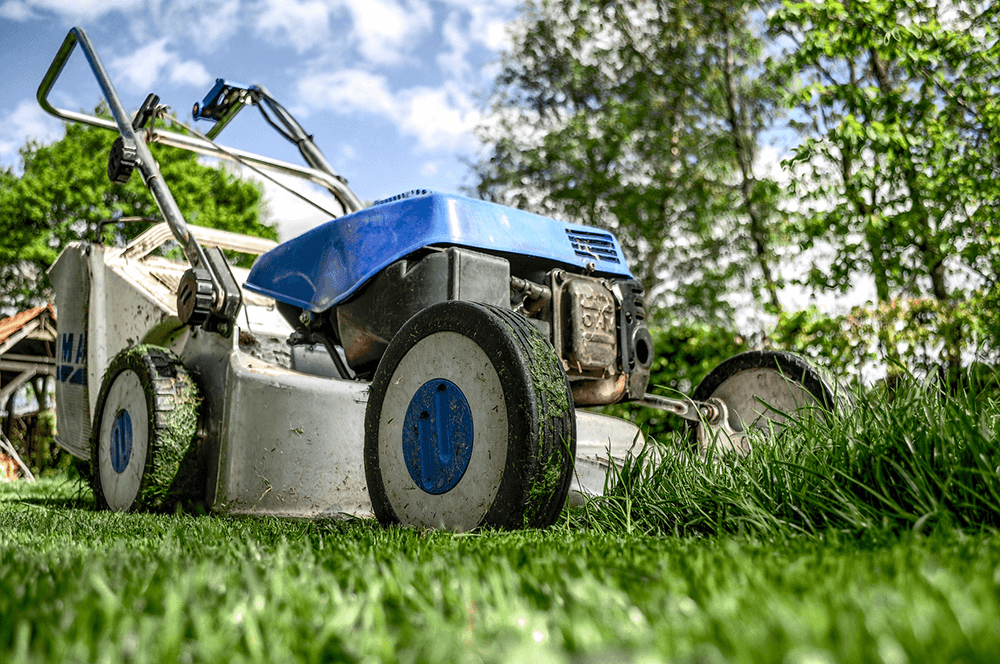
 Packing Tips
Packing TipsLong Term Lawnmower Storage Tips
Your lawnmower does hard work every week. Whether you have a push or riding mower, this equipment requires particular care because it runs on fossil fuels. As you keep your lawn looking pristine during the spring and summer months, this equipment requires regular maintenance to perform well, such as periodic blade sharpening and oil changes.
In addition to consistent maintenance during the mowing season, you need to winterize your lawnmower properly before putting it into storage. If you don't follow the proper steps, it's possible to damage your lawnmower or decrease its potential lifespan. This guide will tell you everything you need to do before placing your lawnmower in storage, step-by-step.
Step 1: Empty the gas tank or add a storage fuel stabilizer.
If you leave gas in a lawnmower for months or throughout the winter, it can grow stale and gum up the carburetor, which makes internal parts rust. This decreases the life of your lawnmower and costs you more money over time to replace parts or even the whole machine. How long can gas sit in a lawn mower? Depending on the gasoline formula it can degrade in as little of 30 days. Properly treated gasoline can stay good for up to a year. To prevent this from happening, you have two choices: empty the gas tank or add a fuel stabilizer.
Removing Fuel: If you choose to remove the fuel, first insert a standard fuel stabilizer and turn on the lawnmower to let the solution course through the system. Then, turn off the mower and let the engine cool. When the lawnmower is at a safe temperature, siphon the fuel into a can and dispose of it safely. Finally, restart your mower and run it until it stops. Repeat this process until it doesn't start due to empty fuel lines.
Using a Storage Fuel Stabilizer: If you prefer to keep the fuel in your lawnmower, put a specialized storage-grade fuel stabilizer into the tank before moving on to the next winterizing steps. A storage-grade stabilizer can keep the fuel fresh for up to two years without needing to drain the tank. This product must be added before you fill your tank for the last time. Run the mower for a few minutes to let the solution fun through the system.
How can you tell that lawn mower gas has gone bad?
There are two methods to tell if your lawn mower gas has gone bad. The first is perform a smell test. Before smelling make sure you are outside as you do not want to be overwhelmed by the fumes. Bad or oxidized gas has a stronger, sour smell to it than good gas. The other way is to take a sample of your gasoline and place it in a clear glass container. If the gas color is dark it has most likely gone bad. A clear or translucent color typically indicates that you have good gasoline.
Step 2: Remove the spark plugs.
Before you start to officially winterize your lawnmower, put safety first. Remove the spark plugs before you tamper with any component of your lawnmower, especially the blades and oil tank. If you don't disconnect the spark plug, your mower can accidentally kick-start and turn on, which can cause serious injury.
How can you tell if a lawn mower spark plug is bad?
A common way to tell if your spark plug is bad is if your engine is more difficult to start than normal. For example, if your push mower stutters or it takes several cord pulls to start or if your tractor mower doesn't turn on after turning the key once.
How often do I change spark plugs in a lawn mower?
Many small engines recommend you change your spark plug every 50 hours. Be sure to check your lawn mower's care guide for its recommended maintenance.
Step 3: Remove the blades & sharpen them.
To make the rest of the winterizing tasks easier, remove the mower blades. This makes it easier to change the oil and clean the underside. Detach the blades by removing bolts that secure it to the lawnmower. Some people mark one side of their blades with spray paint so they remember which way to reinstall the blade.
Wear proper protective gear like gloves when handling sharp objects to decrease your risk of injury. This is a great opportunity to clean, sharpen, and oil your blades so that they are in pristine condition for long-term storage.
How Often Should You Sharpen Lawn Mower Blades?
Typically, every 20 to 25 hours if you only mow your own grass. This could mean once a year or once a week if you perform commercial lawn care. Be sure to check your lawn mower's care guide for its recommended maintenance.
Step 4: Remove the battery.
Batteries slowly drain when plugged in, even when the machine is not turned on. To save its power, remove the battery for the winter and tuck it away in a sealed container where it can stay cool and dry. To disconnect it safely, start by removing the negative cable. Before storing it, wipe it off with a microfiber cloth so that it's completely clean. Do not get it wet. If the battery terminal is dirty, gently remove debris with a metal brush or battery terminal cleaner.
Step 5: Drain or change the oil.
If you have a 4-cycle engine in your lawnmower, you have two choices: drain or change the oil. If the oil is dirty and won't' last another season, it's best to remove it. Place the mower on its side with the air filter facing up. This prevents any oil or gas from spilling.
Remove the plug and tilt the mower slowly so that the oil drains into the pan. After all the oil has drained, replace the plug. It's also possible to change the oil right before storage so that you have fresh oil for the next time you use it.
Step 6: Clean the underside of the mower.
Your mower's undercarriage collects a lot of dirt and grime. Get a tool like a putty knife to scrape away caked-on mud and grass. This step clears passageways and prevents rust from forming. After this area is clean, reattach the blades so that they're ready for next year.
Step 7: Change the air filter.
If your mower has a dirty air filter, it won't burn gas efficiently. Your mower will either have a paper or sponge filter. Paper filters need to be fully replaced. Sponge filters can be removed, washed, allowed to dry completely, and then put back into the lawnmower. If the cooling fins are also dirty, use a stick-like tool like a skewer to remove any obvious signs of debris.
How Often Should You Change a Lawn Mower Air Filter?
The typical recommendation is to replace your air filter every 25 hours or every season. Do NOT run your lawn mower without an air filter as it will cause serious engine damage.
Step 8: Install new spark plugs.
Now that you're finished with the winterizing steps, install new spark plugs so that your lawnmower is ready to go in the spring. This process doesn't take long and only costs a few dollars. New spark plugs work the best and will always work better than used ones, so this extra step can make a world of difference next spring. Even if the old spark plug is in good shape, for a couple of dollars a new one will perform better and ensure a smooth start come spring.
Step 9: Keep the lawnmower covered.
Now that your lawnmower is ready for the next season, all you have to do is cover it and stow it away in a place where it won't get wet or get intruded by pests.
Can You Store A Lawn Mower Outside?
While storing a lawnmower outside is possible, it's generally not the best practice for maintaining its condition. Exposure to the elements, including rain, sun, and moisture, can lead to rust, corrosion, and damage to the mower's engine, blades, and other components. If you must store it outdoors, consider using a durable, weather-resistant cover to shield it from the elements. However, the ideal storage solution is a dry, sheltered space like a garage or shed. This protects your lawnmower from the elements and helps extend its lifespan, ensuring it's ready to keep your lawn well-groomed when needed.
We're Your Storage Solution!
Storage Rentals of America is your convenient self-storage solution. So come into our office or give our storage experts a call at 1-800-457-5678. Our call center is available 7 days a week and can help determine which storage unit size best fits your storage needs.



